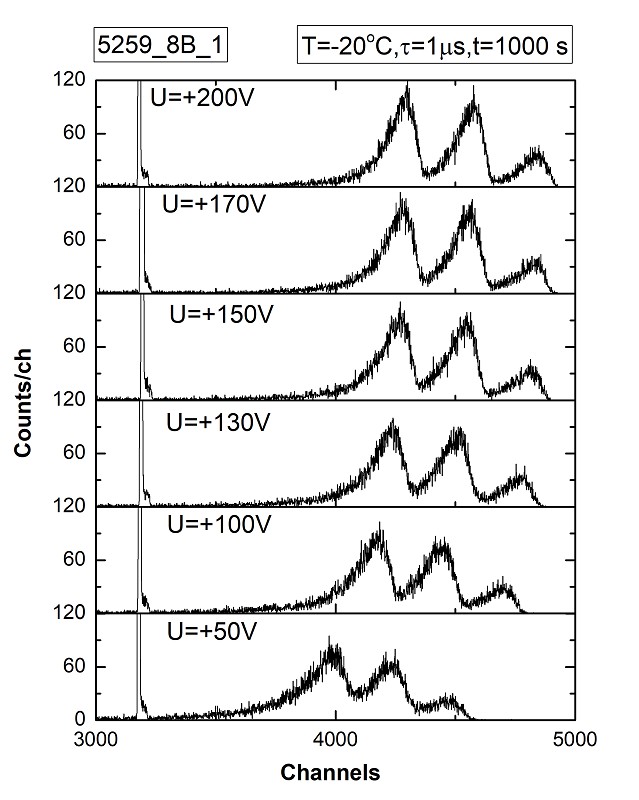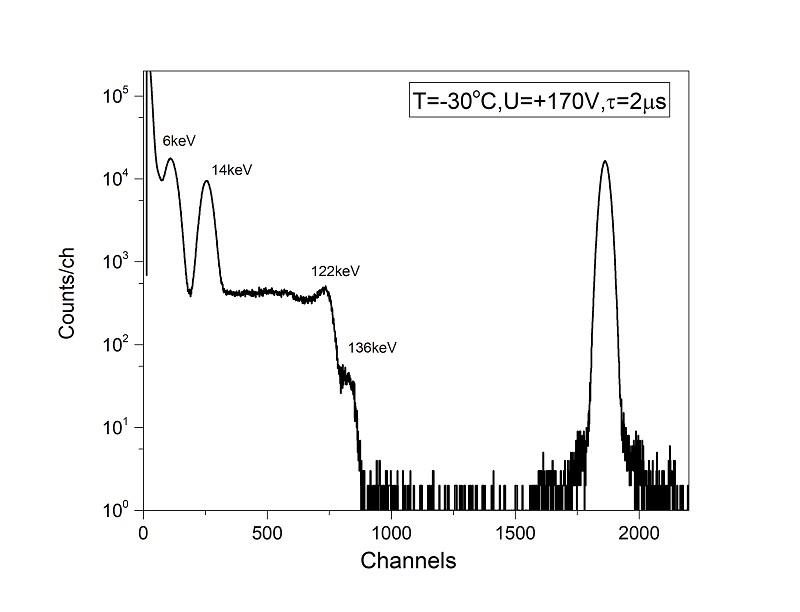INNDEX
Technologies for the production of materials and structures for the detection of X and gamma rays, using low-defect homogeneous crystals (Cd, Mn) Te with high resistance to defect generation as a result of irradiation. The acronym INNDEX. The INNDEX project is a response to the national strategic research and development program „Modern material technologies” – TECHMATSTRATEG.
The aim of the project is to obtain innovative, in relation to the existing on the global market, detection plates for X-ray, and gamma radiation. For this purpose, (Cd, Mn) Te crystals are grown. This material is not commercially available. In X-ray and gamma-ray detectors, the detection plate is the basic and most important element of the detector, supplemented by electronics for signal recording and processing. The material the plate is made of determines the detector’s detection efficiency. The most important drawback of commercially available (Cd, Zn) Te crystals is the tendency to form grains and twins during crystallization, which makes it impossible to obtain sufficiently large monocrystalline detector plates. Plaque monocrystallinity is crucial for an efficient detector because each grain or twin boundary plays the role of traps or recombination centers interfering with the transport of electric charges (electrons and holes) generated by X, and gamma rays. Forty years of work of world laboratories, testing various crystallization technologies, allowed to obtain a maximum of 20×20×3–5 mm3 or exceptionally 25×25×2–3 mm3 tiles. Works in the INNDEX project will be focused on obtaining large detection plates with dimensions of 40×40×2–3 mm3, 50×50×2–3 mm3, even up to 60×60×2–3 mm3, covered with various types of electrical contacts.
The leader of the INNDEX project is a team from IFPAN led by Professor Andrzej Mycielski, with extensive experience in breeding (Cd, Mn) Te and developing appropriate electrical contacts. The consortium includes a group from the TJ3 NCBJ plant with experience and research facilities in testing X-ray and gamma-ray detection systems, as well as a team from the Military Institute of Medicine, Warsaw University of Technology, which tests selected material properties, among others. boundaries of grains and twins with Scanning Electron Microscopy. The final goal of the project is commercialization and sale of detection wafers made of (Cd, Mn) Te obtained from PUREMAT Technologies Sp. z o. o. cooperating with the Institute of Physics of the Polish Academy of Sciences in Warsaw.
The role of the NCBJ team under the INNDEX project is to characterize samples grown in the IF PAN laboratory in order to determine the optimal operating parameters and measure the detector’s response to X and gamma radiation, and then design, build and test an electronic system for recording pulses from a bar detector based on the developed material (Cd, Mn) Te.
An exemplary result of the research conducted at NCBJ:

Fig. 1 Energy spectra of alpha particles measured for sample 5259_8B_1
,
Figure 1 shows the energy spectra of alpha particles emitted by a radioactive source composed of isotopes 241-Am, 244-Cm and 239-Pu. The spectra were recorded for the sample 5259_8B_1. Measurements were made at the temperature of -20˚C for different values of the voltage supplying the detector. There are visible peaks resulting from the absorption of alpha particles emitted by individual isotopes. An improvement in the collection of the charge as a function of the applied voltage Was observed (increase in the amplitude of the signals for higher voltage values).

Fig. 2 X-ray and gamma-ray energy spectrum from 57-Co source
Figure 2 shows the energy spectrum from the 57-Co source. X-ray lines with energies of 6 keV and 14 keV are visible, as well as slightly scratched gamma-ray lines with energies of 122 keV and 136 keV. The line on the right side of the spectrum is the comparison pulse coming from the pulser that simulates the output signal from the detector.
Project manager at NCBJ: Dr Joanna Iwanowska-Hanke
Source (s) of funding: NCBR
Project budget: 12,42 mln PLN (including NCBJ budget: 1.84 mln PLN)
Implementation start date: 2018.02.05
End date: 2022.08.04
Consortium members:
- Institute of Physics of the Polish Academy of Sciences (Project leader)
- National Centre for Nuclear Research
- Warsaw University of Technology
- Puremat Technologies Sp. z o. o.












